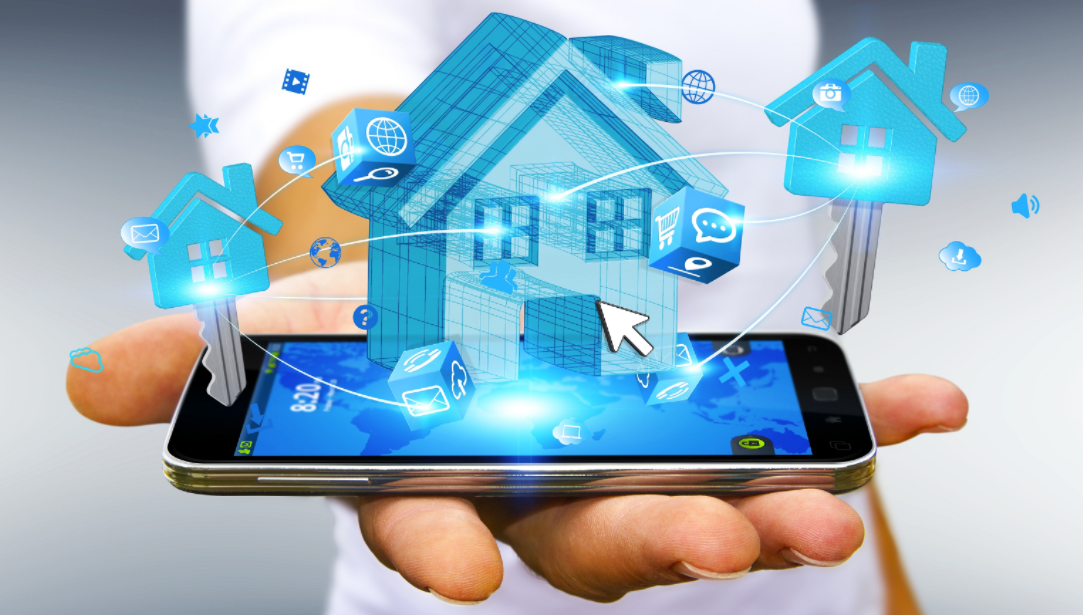Home Automation
Why does my home need to be smart?

Your home greets you by name as you enter through the garage door in the evening. Some unseen hand begins lighting your way from the garage to the kitchen, politely turning them off after you have left the room. You ask your home to begin drawing a bath for you in your master bathroom, as you’ve had a long day. You reach into the fridge to pull out your evening drink of choice when you get an alert on your phone notifying you that your stock of said drink is running low. It then asks if you would like it added to your shopping list for your next trip to the market. You tap yes on your phone, head up to the bathroom, where the tub is already half full of water at the perfect temperature. You ask your house to dim the bathroom lights and turn on some relaxing music while you finish preparing.
All of this sounds like some science fiction wizardry, or some sort of fantastical super-intelligent artificial personal assistant from a big budget movie with an amazing British accent. But no, this isn’t some far flung dream of the future. This is now. Welcome, true believer, to the birth of the truly smart home.
Wait, my home can be smart enough to do all that?
Smart home technologies, while they have been around for a few years, have really been in the beginning stages of maturation. Many segments of the industry have been working on individual parts of the bigger picture, and we are finally getting to the point where these things will not just make a specific task easier but make life in general easier. In many cases, making your home a smart home does not require huge renovations to make it work. A bit of closet space, or a small corner of the basement is usually sufficient to house the brains for your smart home, and some additional wires are almost certain to be needed to make everything work. So, it isn’t a huge inconvenience to make your home a smart one.
So what’s all this about Home Automation then?
First, let’s start by clarifying the difference between the two. A Smart Home is where certain services or appliances, such as your fridge or washing machine, communicate information to other devices, usually via an internet connection, to either give the user more information, or allow the other devices to automatically adjust their settings. This includes things like using your smartphone to view and control the temperature of your refrigerator, or your washing machine sending you an alert on your phone when the latest load of laundry is finished.
Home Automation, on the other hand, has been around in some form or fashion for quite a while. Outside lights turning on or off at a specific time every night. Indoor lights turning on and off depending on when a room is occupied. Home Automation covers activities that occur independent of human interaction or instruction. These things will generally work consistently but are not able to change their behavior without the user or technician making changes to the system.
But your first example sounds kind of like both.
That would be correct. It sounds like both because it is both. And that is what we mean when we say a “truly” smart home. A system that can automate certain menial tasks, while still having the flexibility to adapt to changes in circumstances based off information it collects. And you need someone who knows how to bridge these two things together to make your home truly smart. While there are some out of the box solutions, they tend to lack the ability to be truly customizable and are often limited in their support of different kinds of devices and systems. A professional System Designer is the best option available at getting a system that does everything you want and need it to.
Aren’t these systems expensive?
One of the benefits to a professionally installed system is their scalability in terms of function, and by extension the price. Certain options can be changed out or left out entirely if it is a function that you do no wish to invest in. That flexibility also allows you to split the work up into multiple phases, adding one or two independent systems at a time as your budget allows. While breaking up the costs in this way may be easier, you will generally end up paying more over time as some work will need to be redone and older parts require updates. Even given those factors, a functioning home automation system can add value to the home if you decide to sell, which makes it less of an expense and more of an investment. At the end of the day, the real price tag should be measured by how much easier and convenient your life can be with a truly automated system.
Alright, where do I sign up?
Contact a Home Automation company, like ours, and schedule an appointment. One of our Sales Representatives or System Designers will arrange to meet with you, discuss your needs and expectations, and come up with a customized plan to realize your dreams of a simplified digital life with a Smart Home.

